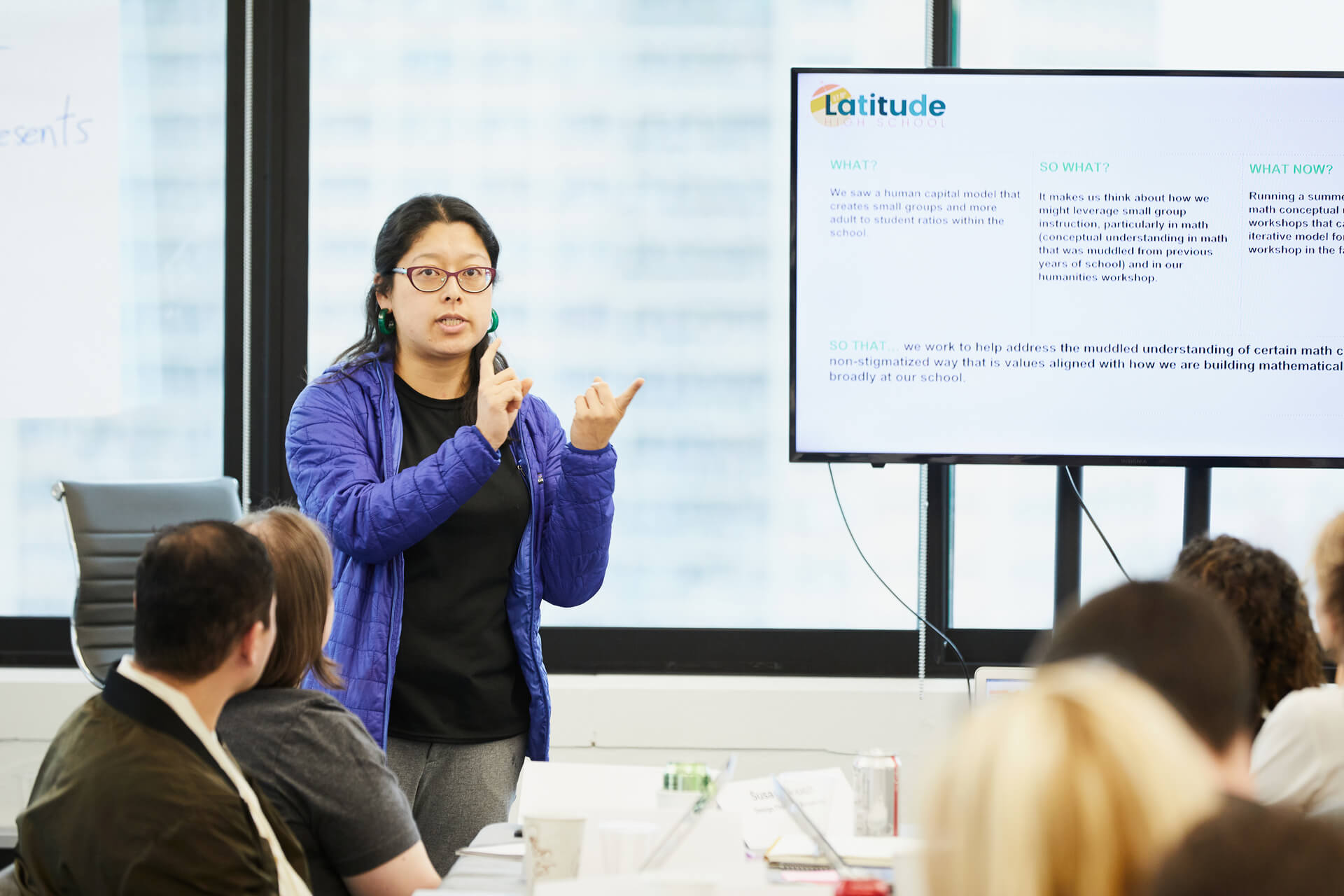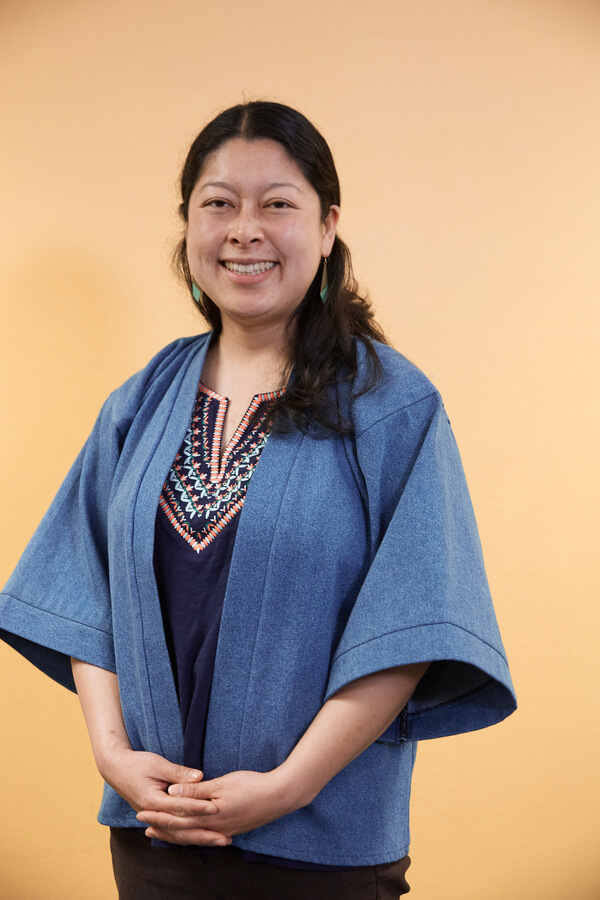How Latitude High Helps Students Graduate With Skills and a Network
Students and teachers are starting a new year at Latitude High School, where they learn…

Students and teachers are starting a new year at Latitude High School, where they learn through real-world, collaborative projects that make an impact on their Bay Area home.
Launched with XQ in Oakland, California, in 2018 with 45 ninth graders, Latitude now has about 300 students. Through an academically rigorous, hands-on approach to learning, the charter school seeks to leverage the region’s wide range of companies and experts to make students feel more connected to their community, while also preparing them for college and careers. Latitude students have worked alongside tech giants, smaller startups, civil rights attorneys, and art gallery owners. They’ve also embarked on science, technology, engineering, arts, and math (STEAM) projects that address the issues facing their city—from homelessness on the streets, to monitoring the water quality of San Francisco Bay.
Latitude graduated its first class of students in the spring of 2022. The school hasn’t yet calculated a cohort graduation rate. But among its 38 graduates, 86 percent plan to go to college. That figure greatly outpaces the Oakland Unified School District’s 50 percent college-going rate for 2021.
As the 2022-23 school year approached, we met with founding principal Lillian Hsu—a leader who has a “minds on fire” goal for the classroom. We talked about saying goodbye to her first class of students, the highlights and challenges of the last four years, and why this fall will be a homecoming for the school.
Lillian, what did you feel as you watched your first group of students graduate in the spring?
I felt a tremendous amount of gratitude to this first class for being willing to go a different route in terms of a high school, just starting out. Our first year, we were a two-classroom school and this tiny, tiny program, not knowing what was going to happen. Without that first pioneering group taking a chance, we wouldn’t have grown to the size we are—and been able to make the impact we [have] today.
Where are Latitude graduates headed next?
The majority are at two- and four-year colleges in California, including UCLA and California State University. We also have students attending some HBCUs, including Howard and Shaw. Many others are going to community college and planning to transfer. We did a lot of work to build their confidence in terms of college as the next step. The pandemic made that hard with college visits. But we prioritized a lot of visits in the fall, then spent a lot of time working on next steps and logistics like college applications and finances. It was so important because so many of our students were first-generation college students. So we wanted to build their confidence so that they could see themselves [in college] and connect it back to their career paths and what they want to do with their lives.

Latitude works hard to instill that confidence in students through the curriculum as well. Can you tell me a little about what that looks like in practice?
First and foremost, one of the things we really value is having students be able to reflect on their growth and learning throughout all four years and to do that in community with their families, their teachers, and their classmates. Every semester, since ninth grade, they ended with a presentation of learning. The presentations really addressed where students were in their journey, where they came from, and where they were going. In the first year, they were so nervous about speaking in front of a group of students and talking about how they grew. But by the time they were seniors, they were talking about their game plan for after high school—and the networks they could rely on for emotional and academic support.
And that speaks to how student work isn’t just about passing a class, but preparing for their future careers. When does that preparation for college, careers, and life begin?
Since ninth grade, they’ve curated an online portfolio highlighting their best work and really reflecting on how they grew along the [school’s] different competencies. This senior group really finished with beautiful portfolios. Our hope is that this can be a showcase for potential employers, in the same way architects and designers have [with] their portfolios. We want them to start it in high school and be able to tell their own story. It’s not just an exercise for school purposes. They understand they are leaving with the ability to narrate what their strengths are and what they would bring to a company.
Despite the challenges of the last four years, what are some of the highlights you’re most proud of?
It was really powerful for this group of seniors that they got the experience we promised them. When they signed up for this adventure and endeavor that is Latitude, it was for the opportunity to do real-world projects and visit different companies to think about what they wanted to do. And I think we stayed true to the spirit of the school, even when we had to be online.
Despite not being able to do site visits, we still connected every student, with a Zoom interview, with a professional in a career area they were interested in. One senior wanted to become a civil rights attorney. She had a chance to do a job shadow with the lawyer who defended Rodney King and Oscar Grant, and then connected with a Harvard Law School grad. Another student virtually met with an electrical engineer at Google, and another with a forensic scientist from the United Kingdom.
This last school year, nearly half of [Latitude’s] students were enrolled in internship programs. One graduate, Amber, completed the Global Surgery summer program with UCSF’s Department of Surgery, and another, Necessity, conducted a creative marketing internship with the San Francisco Symphony.
Project-based learning that engages with community partners is such an important part of the Latitude program. Was there one in particular that you think made a lasting impression on students and the community?
I think the one students always talk about is the Tiny House project. Pre-pandemic, students started the project and had finished building one tiny house and had started a second, but never got to see it installed in the village [in Oakland]. When we came back [to school] in person, one of the first things we did was to schedule a visit, meet the residents, and this group of seniors got to present to the Mayor of Oakland. Students got to see the direct impact they made with the houses they built being lived in. But, more broadly, this group of pioneering students helped to take this idea to other communities who are facing the same challenges, and take this curriculum our science teachers built and spread it state-wide. We’ve secured a grant for this year to teach other schools who want to do this project in their communities.
You began Latitude with about 45 students. Now, you’re going into your fifth year with nearly 300 students. What’s next for the school?
This year will actually be a homecoming for us. We started in the original Fruitvale location, but were displaced to the nearby community college for the last few years. But we purchased the original property and will be back where we started in a beautifully renovated space. One of the reasons we’re so excited to be back in the original facility is the access to public transportation. We had been on the campus of a community college, which was lovely, but far from public transportation. Now, we’re two blocks from the BART station. That makes us more nimble to get kids out across the Bay, and excited about the possibility of blowing out even more engaging experiences, in terms of getting them out on field experiences that are connected to our vision of using the city and the Bay Area as our classroom. We made it happen the last few years, but now that we’re back in this neighborhood, we can do it really well.
Learn more about Latitude and all of the XQ schools and partners who are rethinking high school for all learners at xqstaging.wpengine.com and join the conversation on social media using #RethinkHighSchool.
Photo at top by Gari Askew









